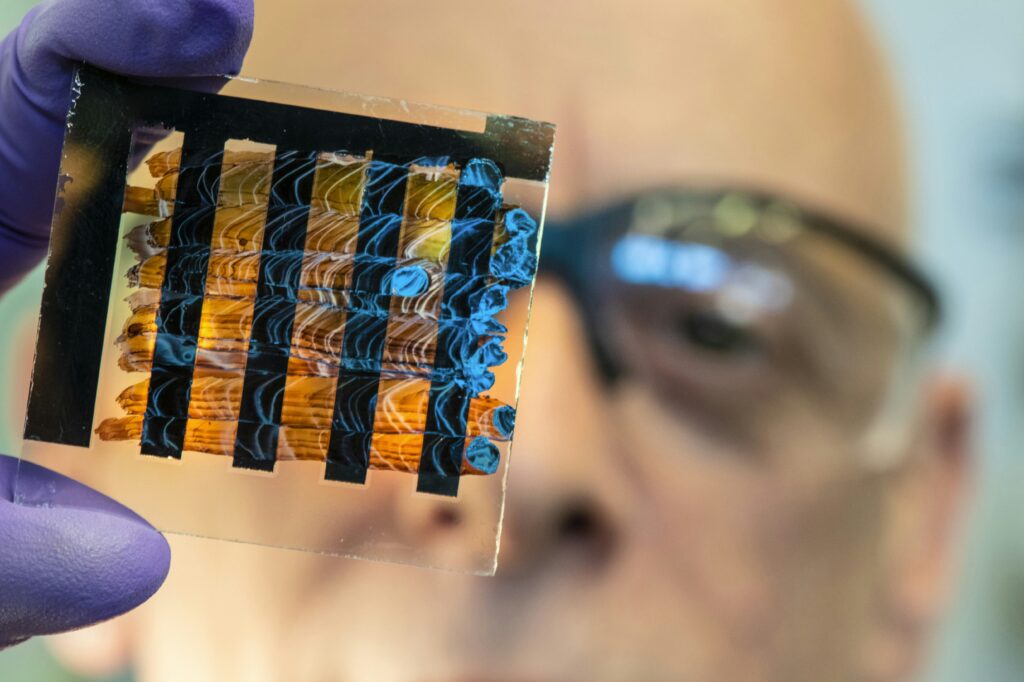
The collision and merger of two neutron stars, the incredibly dense remnants of collapsed stars, are some of the most energetic events in the universe. These cosmic phenomena produce a variety of signals that can be observed on Earth. Recent simulations by a team from Penn State and the University of Tennessee Knoxville have unveiled the significant role of neutrinos in these mergers, impacting both the event’s progression and the resulting emissions.
The findings, published in the journal Physical Review Letters, have profound implications for longstanding questions about the origins of metals and rare earth elements, as well as our understanding of physics in extreme environments. The study is the first to simulate the transformation of neutrino “flavors” during neutron star mergers.
The Role of Neutrinos in Neutron Star Mergers
Neutrinos, fundamental particles that interact weakly with other matter, come in three flavors: electron, muon, and tau. Under specific conditions, such as those inside a neutron star, neutrinos can theoretically change flavors, affecting the types of particles with which they interact. Yi Qiu, a graduate student in physics at the Penn State Eberly College of Science and first author of the paper, explained the novelty of their research.
“Previous simulations of binary neutron star mergers have not included the transformation of neutrino flavor,” said Qiu. “This is partly because this process happens on a nanosecond timescale and is very difficult to capture.”
The team’s new simulations revealed that the extent and location of neutrino mixing and transformation significantly impact the matter ejected from the merger, the structure and composition of the remnant, and the surrounding material.
Implications for Element Formation
The researchers constructed a comprehensive computer simulation of a neutron star merger, incorporating various physical processes, including gravity, general relativity, hydrodynamics, and neutrino mixing. They focused on the transformation of electron flavor neutrinos to muon flavor, which is most relevant in this environment. This transformation influences the composition and structure of the merger remnant, including the type and quantities of elements created.
“A neutrino’s flavor changes how it interacts with other matter,” said David Radice, Knerr Early Career Professor of Physics and associate professor of astronomy and astrophysics at Penn State. “Electron type neutrinos can take a neutron and transform it into a proton and electron, but muon type neutrinos cannot do this.”
During a collision, neutrons in a neutron star can be launched at other atoms in the debris, capturing the neutrons and ultimately decaying into heavier elements, such as gold, platinum, and rare earth elements used in modern technology.
Impact on Emissions and Future Observations
Neutrino mixing during the merger also influences the amount and composition of matter ejected, which could alter the emissions detectable from Earth. These emissions typically include gravitational waves and electromagnetic radiation like X-rays or gamma rays.
“In our simulations, neutrino mixing impacted the electromagnetic emissions from neutron star mergers and possibly the gravitational waves as well,” Radice noted. “With cutting-edge detectors like LIGO, Virgo, and KAGRA, astronomers are poised to detect gravitational waves more often than before.”
The researchers likened the modeling of mixing processes to a pendulum being turned upside down, initially undergoing rapid changes before settling into a stable equilibrium. However, much remains uncertain about these transformations.
Future Directions and Theoretical Advancements
As theoretical particle physics advances, the potential to improve simulations grows. The current understanding suggests that neutrino transformations are likely to occur in neutron star mergers, and their inclusion in future models is crucial.
“There’s still a lot we don’t know about the theoretical physics of these neutrino transformations,” Qiu said. “Our simulations show that if they take place, they can have major effects, making it important to include them in future models and analyses.”
With the infrastructure for these complex simulations now established, other research groups are expected to explore the impacts of neutrino mixing further. Neutron star mergers serve as cosmic laboratories, providing insights into extreme physics that cannot be safely replicated on Earth.
In addition to Qiu and Radice, the research team includes Maitraya Bhattacharyya, a postdoctoral scholar at the Penn State Institute for Gravitation and the Cosmos, and Sherwood Richers at the University of Tennessee, Knoxville. The study was supported by funding from the U.S. Department of Energy, the Sloan Foundation, and the U.S. National Science Foundation.






